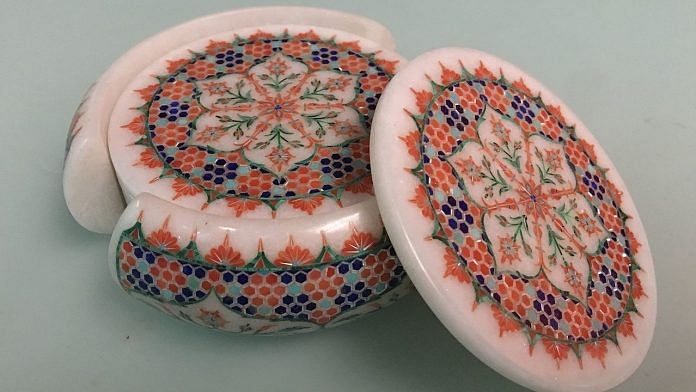Uttar Pradesh launched a sustained campaign to promote its local products even before the Centre kickstarted this initiative. As a flagship scheme of the state government, it has seen several success stories, one of which is Agra’s parchinkari, or marble inlay work — a product that almost didn’t make it to the list. In the fourth in a series on the One District One Product Initiative, we examine Agra’s signature products.
A question that has vexed policy makers in Uttar Pradesh for the last few years is, which item are people most likely to pick from the bazaars of Agra? Is it the Agra petha, a signature sweet selected by the Food Processing Ministry; leather footwear, originally selected by the ODOP programme; or a gem-inlaid marble jewellery box? Which of these could be showcased and promoted as Agra’s signature, ODOP product.
Uttar Pradesh was one of the first states to realise the potential of the ODOP, or One District One Product, initiative. On 24 January 2018 — Uttar Pradesh Divas — the Department of MSME and Export Promotion launched a state-wide flagship scheme to showcase its traditional products — before the launch of the Centre’s identically named initiative. With sharply defined objectives and building on a detailed analysis of the state’s export potential, Uttar Pradesh rolled out a detailed action plan to promote 57 unique products across the state’s 75 districts during Phase-I and aimed at doubling the output of ODOP within the next five years.
However, during an initial analysis of the potential that each district had to offer, it missed Agra’s marble inlay work — choosing instead to bow to local lobbies and practical considerations to promote leather footwear, which provided greater employment in the district. However, as the programme expanded, it became increasingly hard to overlook the local stone-work industry’s contribution to Agra’s exports.
Also read: China loves Guntur chillis — How the Andhra district produced a spicy global product
Hard to overlook parchinkari
On 24 April 2020, the MSME department of Government of UP issued a circular that significantly expanded the scope of its statewide ODOP initiative. While the initial programme had selected one unique, signature product for each of UP’s 75 districts, now buoyed by the success of this flagship scheme, the MSME department notified an additional 20 new ‘supplementary products’ to be promoted. Agra’s pietra-dura (marble inlay work), better known as parchinkari, found its way to the top of the list. This delicate, highly specialised artisanal craft would now supplement Agra’s original ODOP, leather goods.
The decision to showcase parchinkari marble inlay work marked a subtle shift in the thrust of UP’s ODOP initiative — from the initial focus on generic products to showcasing those that were unique, of high-quality and indigenous.
Pietra dura, an Italian word for ‘hard stone’, refers to the marble inlay work that first emerged in 16th century Italy. This stone-work technology reached its pinnacle during the Mughal period in India, particularly under Shah Jahan, and its most delicate and spectacular expression can still be seen in the inlay work on the Taj Mahal and in the Tomb of Itmad-ud-Daulah in Agra. This art form continues to be practised using technology that has remained unchanged for the last 400 years by the descendants of Mughal-era craftsmen in three clusters in India. The remaining parchinkari clusters in India are situated in Varanasi and parts of Rajasthan.
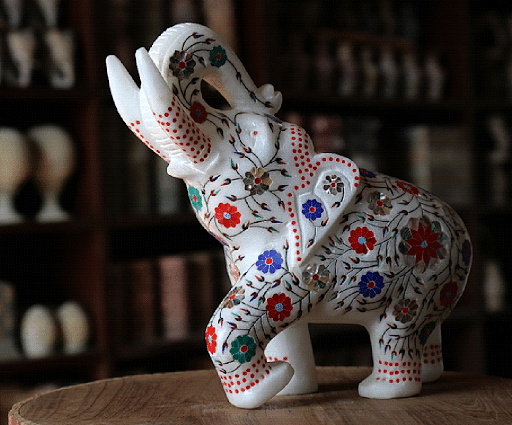
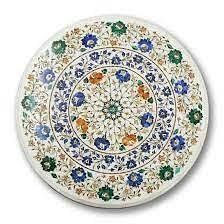
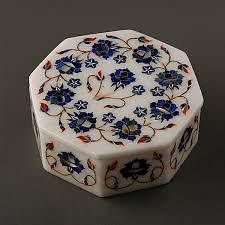
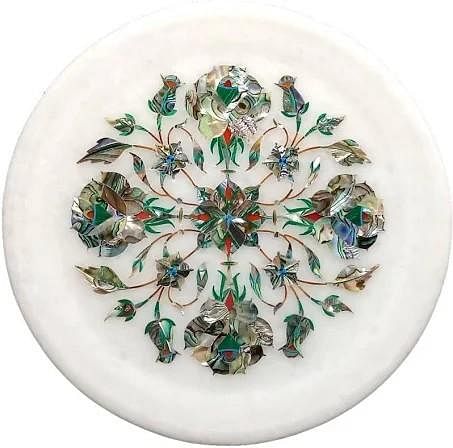
Highly labour-intensive and skilled work, parchinkari remains confined to decorative products such as table-tops, kitchenware, jewelry boxes, flooring and wall decorative items in Agra, the biggest hub of this handicraft. In 2018, there were approximately 810 registered functional units in the district employing 12,000 artisans across the parchinkari value chain, according to an estimate by the Handicrafts Exporters Association of Agra. This number had grown to 1,150 by 2021, after sustained promotion of parchinkari under ODOP Bichpuri, Achanera, Kheragarh and Fatehpur Sikri in Agra district.
Also read: From ban to brand, Indian govt now champions mahua liquor. But Chhattisgarh isn’t cashing in
ODOP’s support to age-old craft
The ODOP initiative has rolled out specific interventions to support artisans such as the Financial Assistance Scheme, which has upgraded nine major units at a cost of INR 2.6 crore, and a Skill Development and Toolkit Distribution Scheme to improve production quality. Marble inlay work is a complex, twelve-stage process that involves grafting semi-precious stones like jasper, onyx, mother of pearl and carnelian using emery wheels and chisels, and employs many skilled artisans who have to use expensive raw materials. Financial support together with training and new toolkit distribution have made some headway in automating and improving processes that have remained unchanged for centuries, training over 200 new craftsmen in the last two years.
Almost 62 per cent of India’s stone craft production comes from Uttar Pradesh, with Agra alone accounting for more than INR 407 crore of exports in the period between September 2020-November 2021. Over 50 per cent of the marble inlay work produced in Agra reached the global market in 2020, (thanks) primarily due to a sustained promotion incentive that took artisans to participate in global fairs like the Dubai Expo 2020.
UP’s ODOP initiative has been one of the few state-specific ODOP initiatives that has taken off, despite initial hiccups. In the four years that it has been in operation, it has resulted in a significant jump in UP’s exports by almost 32 per cent, according to a statement by Chief Minister Yogi Adityanath. As a flagship scheme, it has witnessed sustained support and promotion, and learned and adapted from its mistakes — widening its ambit to include Agra’s marble inlay work, for example.
However, as the initiative matures, and seeks to expand production bases and develop local industry, it risks commoditising age-old traditional crafts and delicate workmanship. In its push to take the marble inlay work to global markets, care must be taken to ensure that the quality of traditional parchinkari does not deteriorate, especially as it moves towards mass production.
District Bar Code is a series on the One District One Product scheme by the government of India. Read all the articles here.
Sanyukta Samaddar is an IAS officer who is currently a Nodal Officer (SDGs), at NITI Aayog. She tweets @SanyuktaSam1. Adhiraj Parthasarathy is a Director in the Development Monitoring and Evaluation Office, NITI Aayog where he works on the evaluation of government schemes. Views are personal.
(Edited by Pranay Dutta Roy)


